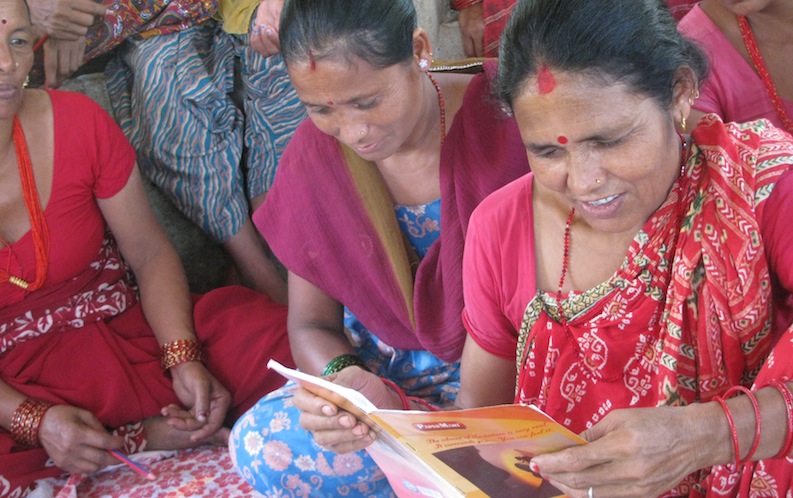
A 70-year-old Nepali woman told me that, after having learned to read, she can die happy. She values her education over her belongings since, as she said: “Everyone will die one day leaving behind all possessions, but you can carry what you have learned.”
In Nepal, only 46.7% of women can read, compared to 71.1% of men. Without the ability to read, millions of women in Nepal can’t work, lack confidence, and must rely on others to navigate the world around them, a problem that READ addresses through its literacy programs. Earlier this year, I visited three READ Centers with READ Nepal’s Monitoring and Evaluation Officer, Durgesh Yogi, to conduct focus group discussions with the women who had participated in literacy classes offered by READ.
Speaking with the women at the Center, I learned a surprising reason why many of these women never had the chance to go to school: they said that many years ago villagers thought that if they learned how to write, girls would write love letters to boys and eventually elope with them.

Many women told me that before these classes they were not only embarrassed by their inability to read, but they had also been taken advantage of due to their lack of education: while selling milk and vegetables at the market, people had cheated them because they couldn’t count money.
Others recalled how being illiterate prevented them from communicating with their loved ones:
“Upon receiving letters from my husband who works in the Indian army, I have to look for someone from the village to read letters for me. What can be more painful on this earth than not being able to read your husband’s words?” one woman said. After some time, her husband sent her a mobile phone so that they could talk instead, but she still needed help just to make calls.
“It’s like being blind, if you can’t read and write,” she said.
To address this gender gap in Nepal, READ facilitates literacy trainings and provides educational resources for women so that they can learn to read, improve their self-esteem, and become more independent.

In 2013 alone, 4,672 women learned to read at READ Centers in Nepal.
In addition, the Hariwan READ Center in southeastern Nepal runs a school offering the School Leaving Certificate examination, which is mandatory in Nepal to pursue higher studies, so that these women can continue their education, no matter their age.
Through our monitoring and evaluation work, we know that READ Centers are educating and empowering women throughout Nepal: 83% of surveyed women have reported improved confidence as a result of the resources offered by their READ Center, and 74% can now speak comfortably in front of groups. As I listened to these women voicing their opinions and sharing their stories with such confidence, I could not believe that not long ago, they were afraid of public speaking.
Because of the programs offered by READ, 21,818 more Nepali women over the past five years can read signs, help their children do their homework, do basic calculations, and count money. They can correspond with their husbands away from home and they will never be cheated out of money at the market again – and these are just some of the countless everyday benefits of literacy for women in Nepal.
But millions of women in Nepal are still illiterate, and the successes of the READ Centers only encourage us to expand our reach to offer the benefits of an education to more women. Our work is far from done and we need your help.
Please make a donation today to help women transform their lives: just $100 teaches a woman to read.




